How to pitch your game at Unpub
10 things you can do to improve your game pitch whether it is for a publisher, retailer, customer, or player. Lessons learned from Feedback Frenzy at Unpub 2025.
Welcome to Skeleton Code Machine, an ENNIE-nominated and award-winning weekly publication that explores tabletop game mechanisms. Check out Public Domain Art and Fragile Games to get started. Subscribe to TUMULUS to get more design inspiration delivered to your door each quarter!
I’m back from Unpub Festival 2025, and wow did I have fun! My first time at the event was such a success that I’m already looking forward to next year. It was well-organized, packed with informative panels, and the playtesting areas had a seemingly endless supply of talented designers. And the Baltimore location made the trip easy!
I learned so much while there, but there are a few things from Unpub that I’d like to cover in detail:
Pitching games at Feedback Frenzy
Playtesting (specifically, what questions to ask players)
Making game prototypes
Consider this a first in a series. Subscribe so you don’t miss the next part!
Unpub’s Feedback Frenzy
One of the highlights of the event for me was Thursday night’s Feedback Frenzy:
A group of pre-selected designers practice pitching game ideas to industry professionals in front of a live audience. Each pitch is limited to no more than 5 minutes. The Designers may bring prototypes, slides, handouts, etc, as they would during a real-life pitch. The panelists then critique the game pitches, while asking questions and offering suggestions.
Eleven different designers pitched their games to a panel consisting of Chris O’Neill / Yeet (9th Level Games), Suzanne Sheldon (Restoration Games), and Joe Wiggins (Allplay).1 It was an open event with a full crowd watching the pitches, responses, questions, and feedback.
Most common feedback
While I didn’t pitch a game at Unpub this year, I did listen carefully to all eleven pitches that were given. Each one featured a different game, unique gameplay, and was given in its own style — and yet there were some common critiques.
I wanted to capture the “best practices” that could help designers prep for next year’s event — a practical checklist for pitching games. More than that, however, it is important to be able to communicate about your game whether you are pitching to a publisher or not. It could be to a potential player at a convention, a group of playtesters, or just some interested friends. Most of these tips apply to all of those scenarios.
10 ways to improve your pitch
If I were to pitch a game at the next Unpub Feedback Frenzy event, this is the checklist I would use to prepare.2 Based on my notes, these were the most common feedback topics and ways to improve:
1. Hand out sell sheets first
By far, the most common feedback from the panel was to have a sell sheet. A sell sheet (or sales sheet) is a type of printed marketing collateral that you can hand to the panelists before you begin your pitch.3 It should include: game name, tagline or hook, brief overview, core mechanisms, player information, required components, and designer information. It should be a single page, easy to scan (vs. read), and visually engaging. Use it to call out any unique selling points.
2. Lead with box information and game weight
The second-most common feedback given was to lead with what I would call the “box information” including: player count, duration, and age range — all the info you’d find in those little icons on the side of a board game box. In addition, you should include a sense of game weight or complexity. Is it a heavy euro game, a gateway game, or a light party game? Publishers usually have a specific demographic that they target, and this helps position the game for them.
3. Communicate touchstones and inspirations
While I would have thought that publishers wanted to focus only on what makes a game unique, they also said that comparing a design to existing games is helpful. Leading with, “Ticket to Ride network building combined with the co-op asymmetry of Spirit Island” is a quick way to communicate how your game works. You can also use it to describe the potential players such as, “Fans of The King is Dead and Pax Pamir will love this game.”4
4. Have a clear hook
The hook is what gets people to pick up your game versus a different one. It’s what makes your game unusual, unique, and intriguing. An good example was a game called Power Structure by Cullen Henry that was pitched as a global conspiracy “deck-bidding” game that combined deck-building with auctions. That was up front in the pitch and captured everyone’s attention. Lead with the hook and not a rules explanation.
5. Decide if your theme is negotiable
If you are self-publishing and/or using crowdfunding (e.g. Kickstarter), you have total control over your project. If you are, however, planning on using a publisher, they may have considerable control during the development of your game. Your space theme might be replaced with anthropomorphic animals, and you need to know if you are OK with that before starting the pitch. If your theme is important to you, say that, but know that it might make it harder to get the game signed.
6. Consider production costs
I’m not sure anyone expects game designers to know all the manufacturing and business details, but you should have some idea about cost. Specifically, you should know roughly what you game would cost to produce.5 Is it going to be a $20 MSRP game or a $90 MSRP game? Also, become familiar with common manufacturing guidelines such as ensuring the number of cards in your game are a multiple of 54.6
7. Pay attention to play-time claims
Games get bracketed into groups by their playtime. Saying a game might take 40 minutes could have a significant impact on perception versus a game that is listed as playing in 30 minutes or less. This is particularly important when crossing over the 1 hour or 2 hour marks in playtime. We all know that playtimes vary and that publishers usually use low-end estimates on the box, but that is because it works.
8. Know who the game is for
Designers were sometimes asked, “Who is this game for?” The idea is that a game should be designed with a player in mind. This decision can impact how broad or narrow the market appeal of a game will be. It’s OK to make a game with more narrow appeal, and you don’t need to make the game for everyone. You should, however, be able to communicate who the ideal player would be.
9. Consider player counts and solo modes
Solo games are popular and only going to become more popular. If the game is 2-player cooperative, could a solo mode be added? Often the answer is yes, and that greatly expands the potential audience for the game. Similarly, games that require a high number of players (e.g. 6+) can be harder to sell because they are simply harder to get to the table. Design your game as you wish, but at least consider how the player count might restrict the game.
10. No more farming and park building games
This advice was given by Joe Wiggins from Allplay, but I’m sure is common across many publishers. Cozy farming games are popular, but there are a lot of them out there. Your tile laying game about building parks with a generic theme isn’t going to be as compelling of a pitch as one with a unique and engaging hook.7
Specific notes for TTRPGs
While all the games pitched at Feedback Frenzy were board games, this advice applies to pitching TTRPGs as well. Some might need slight modifications (e.g. #10) but the core concepts still apply: have a sell sheet, lead with your hook, explain who the game is for, share what makes it unique, and what is required to play.
That said, you may also want to:
Highlight the narrative experience: Unlike many board games, TTRPGs often succeed or fail based on world-building, narrative, and thematic elements. A board game pitch might be fine with just a cursory overview of the theme, but a TTRPG needs to demonstrate that it can be immersive and have a story to tell.
Explain the role of the GM: Beyond player counts and session duration, the GM’s role is an important aspect of any TTRPG. Is the game GM-less? If so, does it support solo play?
Outline the core resolution mechanism: If you have a unique resolution mechanism, it is worth pointing out how it works. This is less important if it is a simple roll over or roll under system.
You might also want to talk about the on-boarding mechanism for the game — how hard or easy it is for new players to start playing.
Conclusion
Some things to think about:
Unpub is awesome: This was my first Unpub convention and I wasn’t sure what to expect. What I found was a well-organized event packed with friendly and creative people who love tabletop games. I immediately felt welcome and would be comfortable playtesting games there. Can’t wait to go back.
Feedback Frenzy is terrifying (and awesome): It takes a lot of guts to get up in front of an entire convention of people, pitch your game, and take some blunt feedback from industry professionals. I applaud every one of the designers who pitched their games! I can’t think of a better opportunity to hone your pitching skills and get clear, actionable steps to make your game better.
Pitches aren’t just for publishers: It’s easy to think, “I’m going to self-publish so I don’t have to worry about pitching my game.” Wrong. Learning effective communication skills will always be useful, and being able to concisely pitch your game is a necessity. If you ever want others to play your game, learn how to pitch.
If you want to learn more about pitching games read How to Pitch Your Indie Game at Exeunt Omnes — 10 tips are based on 30 Things I Hate About Your Game Pitch by Brian Upton.
What do you think? How good are you at pitching your games? Which Unpub 2025 follow-up topics would you like me to cover next?
UPDATE: I added a thread to Substack Chat where you can share a brief pitch for an unpublished game you are working on. Keep it short (just a few sentences) and see how many of the tips you can incorporate. Give/get feedback, but keep it positive and constructive. :)
— E.P. 💀
P.S. Thank you to everyone who placed orders at the Exeunt Press Shop while I was at Unpub! I’m back! Your orders will ship this week.
Skeleton Code Machine is a production of Exeunt Press. All previous posts are in the Archive on the web. Subscribe to TUMULUS to get more design inspiration. If you want to see what else is happening at Exeunt Press, check out the Exeunt Omnes newsletter.
I thought this panel mix was perfect: Chris focuses on TTRPGs, Suzanne works for a company that revives old titles with high-production quality, and Joe targets accessible small box games.
I plan to demo/playtest a game I’ve been working on at Unpub next year. While I won’t be pitching it to publishers, this list is just as helpful in preparing for attracting playtesters.
There are many guides online for making a board game or TTRPG sell sheet, most of which have overlapping information. The Absolute Beginners Guide to Sell Sheets and Sell Sheets for Board Games are decent places to start. The Exeunt Press Product Catalog is an example of how to combine multiple product sell sheets into a single, unified document.
This is the killer pitch for me, by the way. I love games that use influence vs. control.
Panda Game Manufacturing has a free estimator that can be helpful.
Note that the magic number is not always 54 and may vary by printer, card size, and paper stock weight. Talk to your manufacturer for actual cost impacts, but it’s good to know that this concern exists.
Farming, you say? What about farming with zombies?!?!


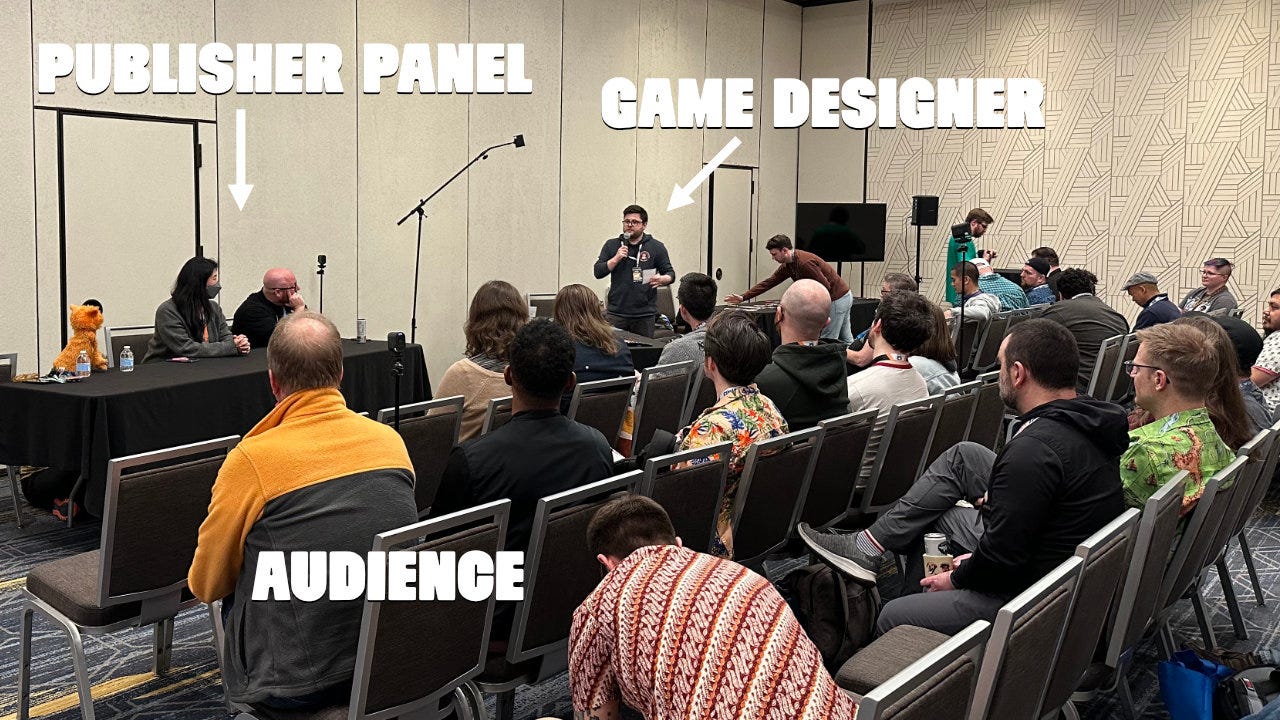
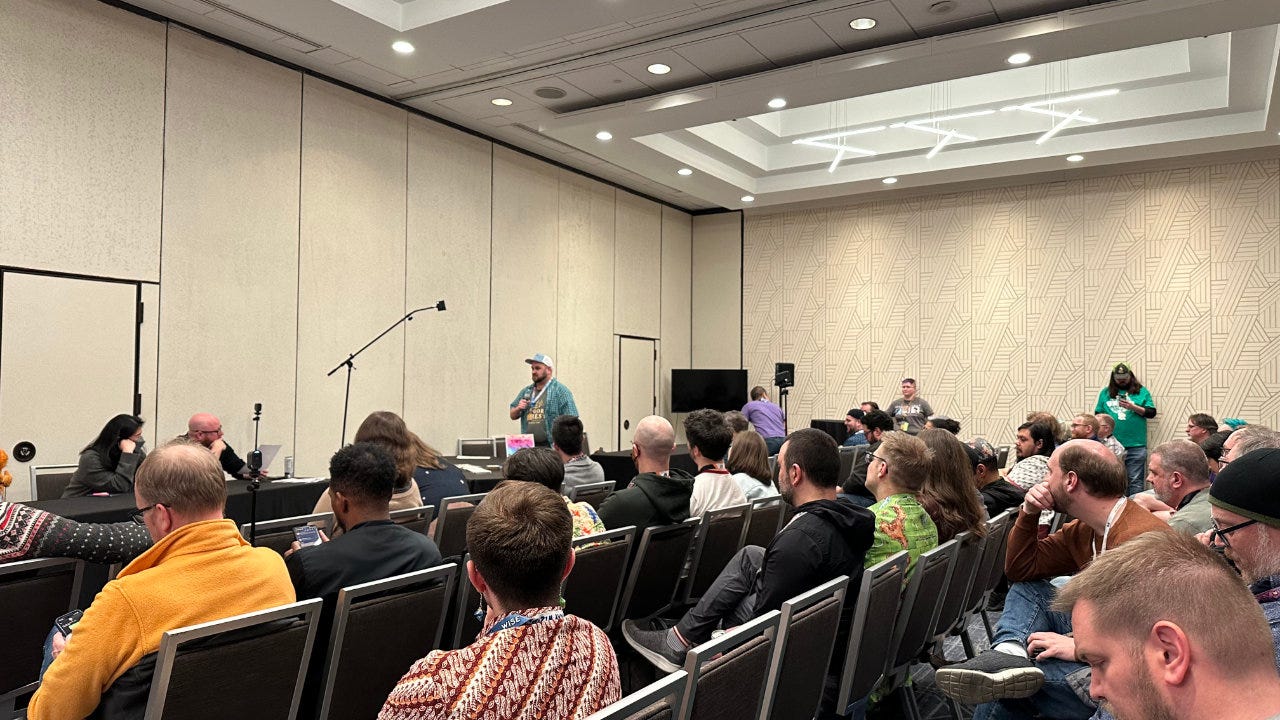
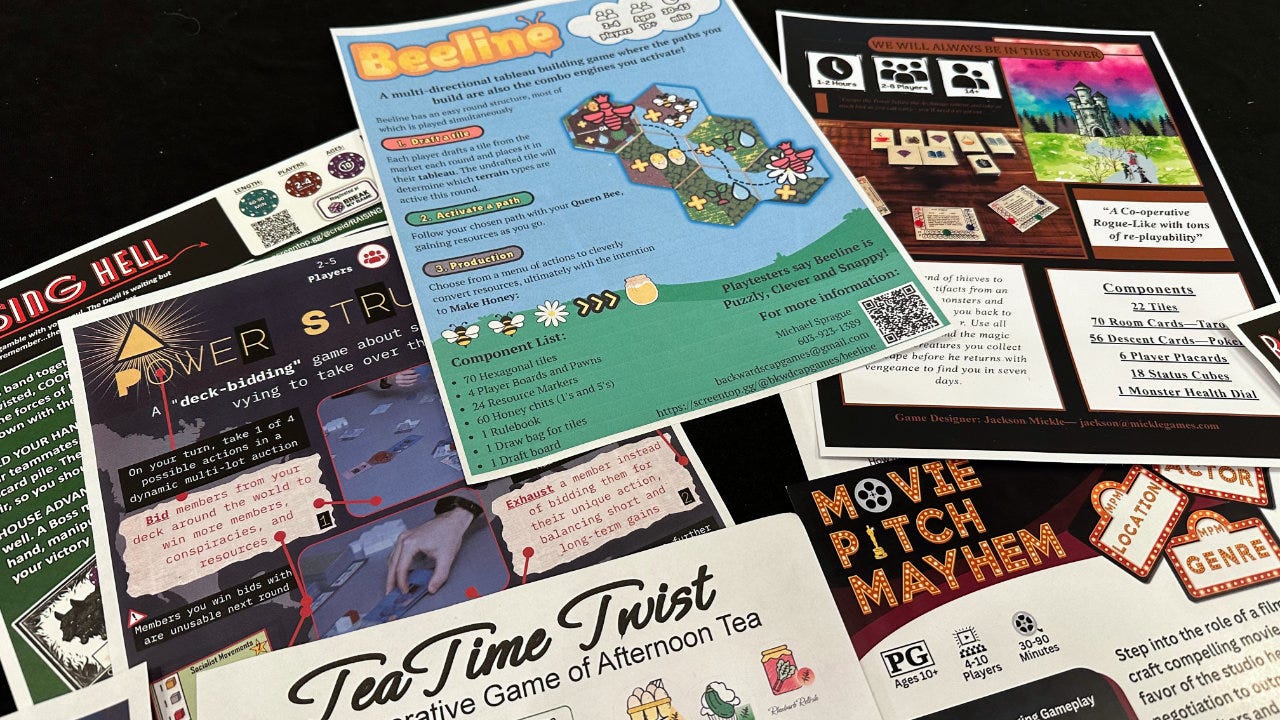

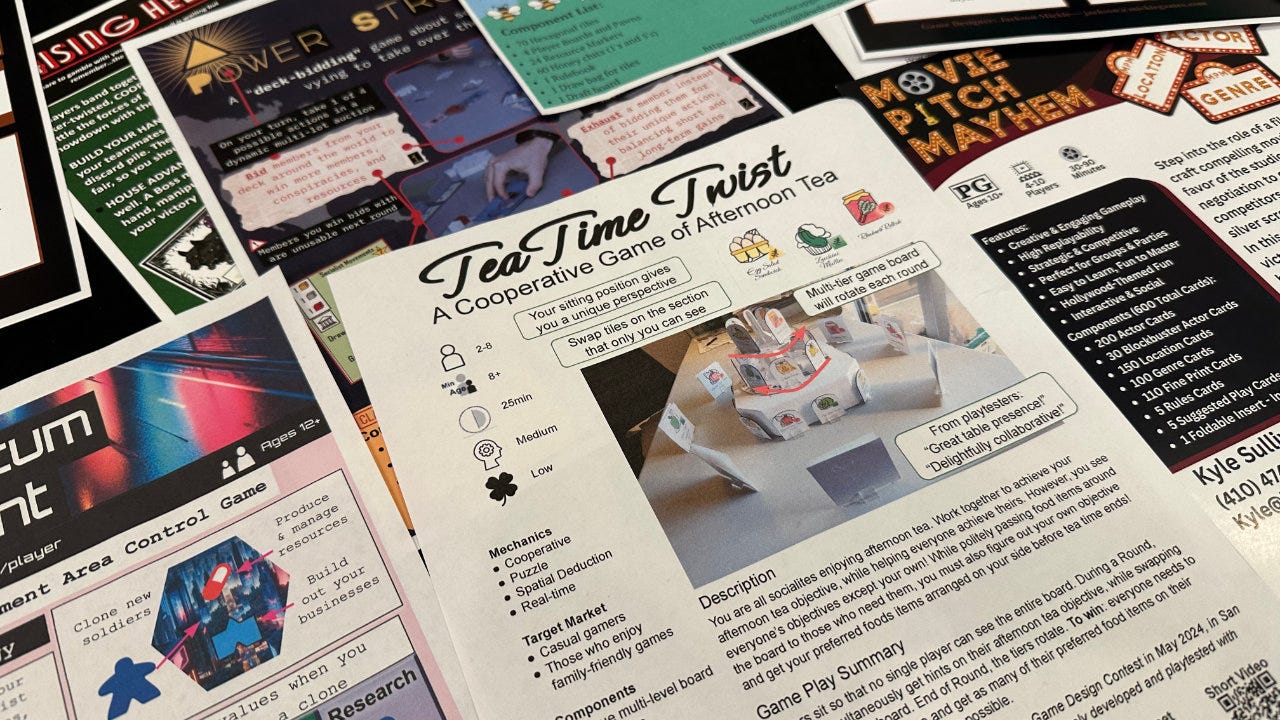
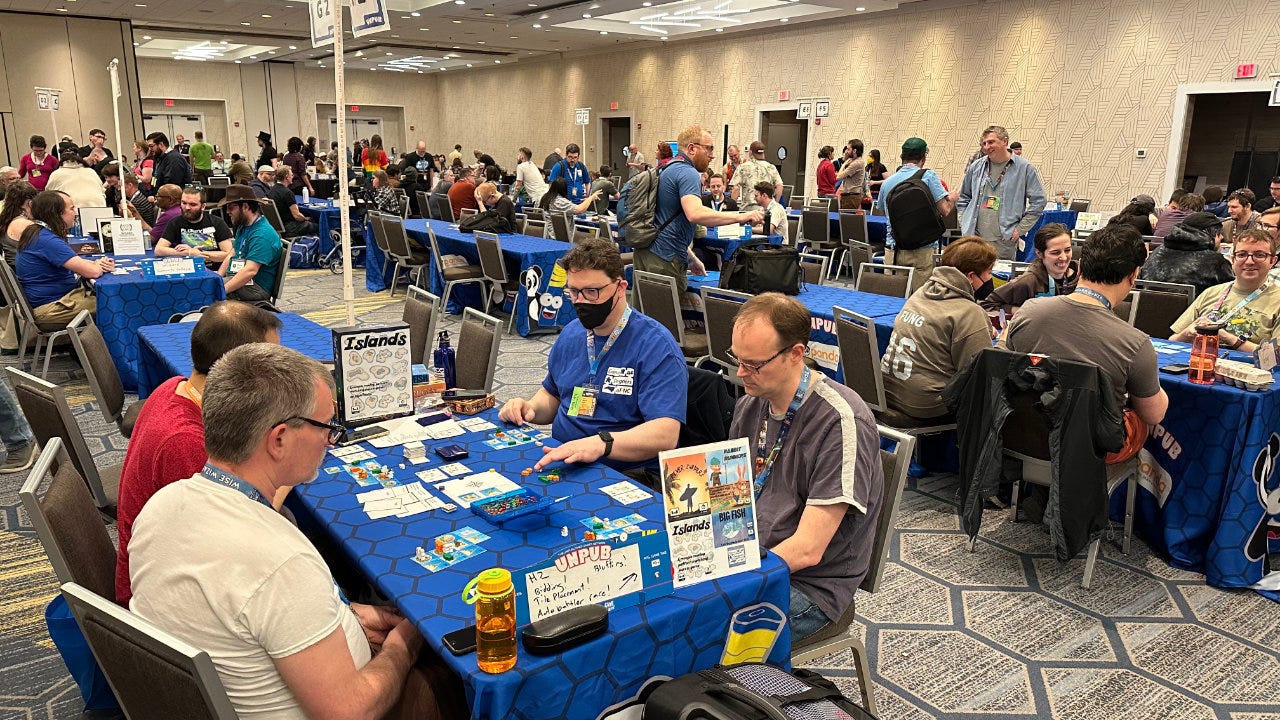
Thanks for the awesome tips, I didnt even know about UnPub until now, will have to make it a goal to go next time!
Sidenote: Would you have any interest in reviewing and critiquing my pitch for Peasantry? I'd happily return the favor as you mentioned you had a project of your own.
If I'd have known you were there, I absolutely would have made a point of saying "hi".
Next time, be sure to check out Game Jam. It's a session of collaborative, impromptu game design.
One other tip regarding production costs. Keep in mind that for custom plastic components, they need to make a different mold for each color. I was talkiing with a designer this weekend who thought he needed 12 molds only to discover that he was actually needed 60!